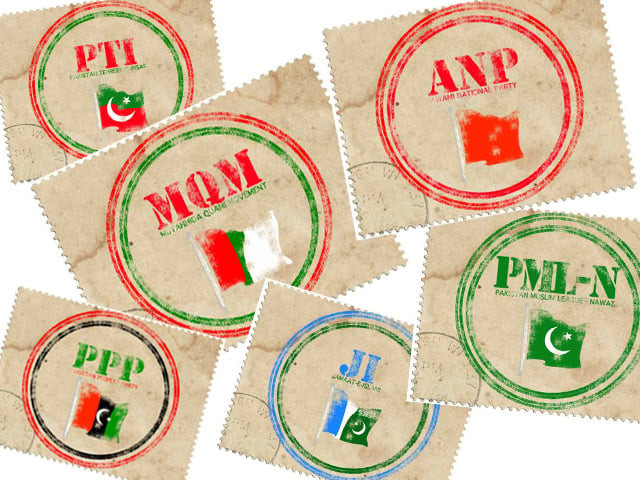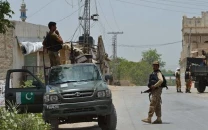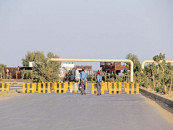Economic policy: Short of ideas on pressing issues
The external debt crisis is at a precarious state as reserves have started to deplete rapidly.

In the upcoming fiscal year – starting this July – a debt of $6.5 billion needs to be paid back, including $3.6 billion to the IMF. PHOTO: FILE
The external debt crisis is at a precarious state as reserves have started to deplete rapidly. As of April 12, the central bank’s reserves stood at $6.64 billion. By excluding over $2.6 billion which the State Bank pledged in forwarding bookings for imports, the actual reserves stand at $4 billion – not sufficient for even a month long import bill.
With only $4 billion reserves in hand, Pakistan has to return $1.5 billion to international creditors within two months including $850 million to the IMF.
In the upcoming fiscal year – starting this July – a debt of $6.5 billion needs to be paid back, including $3.6 billion to the IMF
Within days, the incoming government would have to sign a programme with the International Monetary Fund (IMF) to avoid going into default, Chairman Research Institute of Islamic Banking and Finance Dr Shahid Hasan Siddiqui observed.
Under such circumstances, party manifestos do not offer a response to the challenge, Dr Shahid said, adding that the manifestos are not aligned to ground realities.
PTI

If voted to power, PTI will declare a national emergency on energy shortage, corruption, poor governance, uncontrolled expenditures and declining revenues.
The party also plans to reduce Public Sector Enterprises (PSEs) losses by corporatising railway ministry and removing PIA from the Ministry of Defence’s control. PTI plans to cut non-development expenditures by heads of state and the government, reducing the size of the government and eliminating discretionary spending.
PTI plans to give full autonomy to FBR, raising taxes by improving administration, slapping taxes on agriculture, stock market and real estate, and abolishing all types of amnesty schemes. PTI too is silent on tackling the issue of external debt amortization and rising debt burden.
MQM

The party, like others offers solutions to fiscal and energy problems besides improving the management of the PSEs through public-private partnership model. It is, however, silent on debt management, external payments, and declining investment and growth. Its manifesto also advocates recovering written off loans but this move only appeases voters rather than offering a solution to the debt crisis.
ANP

ANP’s agenda is more regional than national despite its decision of contesting elections from all the provinces .The party has done remarkably in offering solutions to fiscal woes and importantly gives a plan for addressing increasing debt burden where all the other parties have failed.
It promises to adhere to Fiscal Responsibility and Debt Limitation Act and proposes to return expensive loans on priority basis to make room for more development spending by cutting interest payments.
PPP-P

In its manifesto, Pakistan Peoples Party largely defends its performance over the last five years. It promises to resolve fiscal and energy problems and enhance economic growth. During their tenure, the average growth rate dropped to 3% from 6% in 2003-2008.
The PPP manifesto does not offer any solution to managing the Rs15 trillion debt, which was below Rs6 trillion when the party came to power in 2008.
PML-N

Under its “Economic Revival Plan”, the party has projected to increase the current growth rate of approximately 3% to 6%. Even though it has a well-defined strategy chalked out, this pace is not sufficient to absorb a 2.5 million youth bulge entering the market yearly. For such absorption, a 7-8% annual growth rate is needed.
The party has focused extensively on the need to increase investment. It has targeted an investment to GDP ratio of 20% from the present 12% through public and private investment in infrastructure and energy projects.
To overcome energy shortages, PML-N plans to improve governance. It promises to reform NEPRA and implement the regulator’s determined tariffs. This indicates that the party is passing on cost of energy generation to consumers.
The manifesto misses the issue of tackling the Rs15 trillion debt burden and of upcoming payments to IMF. Defending the party’s stance, PML-N leader Sartaj Aziz said the proposed home-grown economic revival plan will minimise the need for a stabilisation package backed by the IMF.
Published in The Express Tribune, May 3rd, 2013.



















COMMENTS
Comments are moderated and generally will be posted if they are on-topic and not abusive.
For more information, please see our Comments FAQ